Items Child
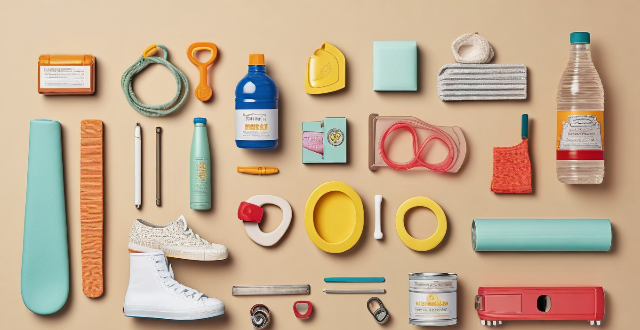
Are there any special considerations for creating an emergency kit for children ?
Special considerations for creating an emergency kit for children include age-appropriate items, comfort items, snacks and water, clothing and footwear, and entertainment. It is important to tailor the contents of the kit to the child's needs and abilities, and include items that can help to calm and reassure the child during an emergency situation.

How to choose the right extracurricular activity for your child ?
Choosing the right extracurricular activity for your child is crucial for their development and well-being. Consider your child's interests, skills, and abilities, evaluate the time commitment and logistics, seek recommendations and read reviews, and involve your child in the decision-making process to help them choose an activity they will enjoy and benefit from.
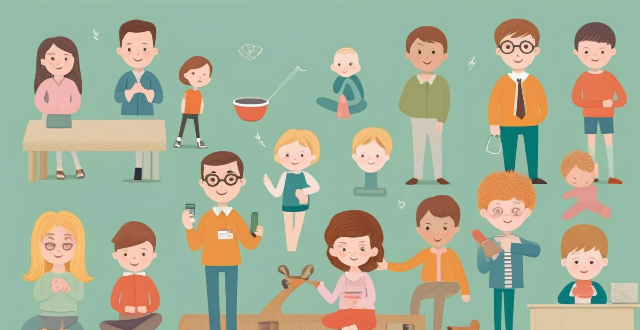
How do you identify a child who may have special education needs ?
Identifying a child with special education needs is crucial for providing them with the right support and interventions. Signs include delayed developmental milestones, difficulty in school, unusual behaviors or habits, and health concerns. If you suspect a child may have special education needs, consult with professionals to determine the appropriate course of action.

How can I teach my child better concentration habits ?
Concentration is an essential skill for children to develop as it helps them focus on tasks, learn new things, and achieve their goals. Teaching your child better concentration habits can be challenging, but with patience and consistency, you can help them improve their ability to pay attention and stay focused. Here are some tips to teach your child better concentration habits: 1\. Set Clear Expectations: Establish clear expectations for your child's behavior and concentration levels. Make sure they understand what is expected of them and why it is important. 2\. Create a Distraction-Free Environment: Minimize distractions in your child's environment to help them concentrate better. Turn off the TV, put away toys or electronic devices, and ensure that there are no loud noises or interruptions during study or task time. 3\. Break Tasks into Smaller Chunks: Breaking down tasks into smaller, more manageable chunks can help your child stay focused and avoid feeling overwhelmed. 4\. Use Visual Cues: Visual cues such as checklists or charts can help your child stay organized and focused on their tasks. 5\. Encourage Short Breaks: Encourage your child to take short breaks between tasks to recharge their mental batteries. A five-minute break every hour or so can help them maintain focus and avoid burnout. 6\. Practice Mindfulness Techniques: Mindfulness techniques such as deep breathing exercises or meditation can help your child develop better concentration habits. 7\. Praise Effort and Progress: Praising your child's effort and progress can motivate them to continue working towards better concentration habits. Acknowledge their accomplishments and encourage them to keep pushing themselves to improve.

What are some fast strategies for organizing my child's toys and books ?
Fast Strategies for Organizing Your Child's Toys and Books: 1. Create a storage system using labeled bins, shelves, and hanging organizers. 2. Implement a cleaning routine with daily tidy-up time and weekly deep cleans. 3. Rotate toys and books seasonally or based on age appropriateness. 4. Involve your child in the process by making it fun and allowing choices. 5. Utilize multipurpose furniture with built-in storage for added organization.

What are the key elements of child safety education ?
Child safety education is crucial for the well-being and protection of children. It involves teaching children about potential dangers and how to avoid them. This educational process helps children develop a sense of awareness, responsibility, and self-protection. In this article, we will discuss the key elements of child safety education. The main elements of child safety education include personal safety, stranger danger, internet safety, home safety, school safety, and road safety. Personal safety includes teaching children about personal boundaries, private parts, and inappropriate behaviors. Stranger danger education helps children identify potential threats from unknown individuals. Internet safety education is essential in today's digital age. Home safety education focuses on creating a safe environment for children at home. School safety education aims to create a safe learning environment for children. Road safety education is crucial for children who walk or cycle to school or play outside. By focusing on these key elements of child safety education, we can help children develop the skills and knowledge they need to stay safe and protect themselves from potential dangers. Child safety education is an ongoing process that requires the involvement of parents, schools, communities, and governments.

How do family courts handle cases related to domestic violence and child custody ?
Family courts play a crucial role in handling cases related to domestic violence and child custody, prioritizing safety, investigating allegations, considering the best interests of the child, making custody decisions, and providing ongoing support and monitoring.
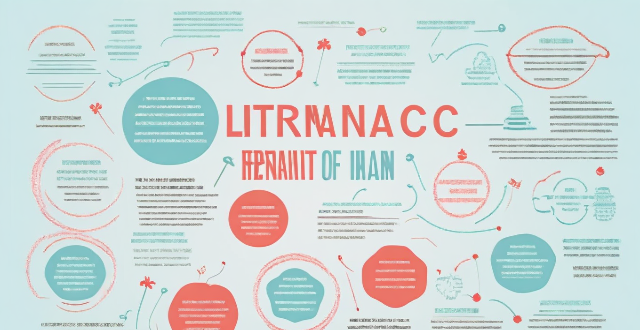
What is the relationship between physical literacy and child development ?
Physical literacy is crucial for child development, enhancing cognitive, social, emotional, and physical dimensions of learning. It improves memory, attention, problem-solving skills, communication, cooperation, empathy, self-esteem, resilience, muscle strength, cardiovascular health, and reduces the risk of chronic diseases. Incorporating regular physical activity into children's daily routines promotes their overall growth and well-being.

What are the essential items to pack for a backpacking trip ?
Essential Items to Pack for a Backpacking Trip: Shelter and Sleeping Gear, Clothing, Food and Water, Cooking and Eating Utensils, First Aid Kit and Safety Items, Navigation Tools, and Miscellaneous Items.

What are some creative ways to spend quality time with your child without using technology ?
Spending quality time with your child is crucial for their development and well-being. Here are some creative ways to do so without relying on technology: 1. Outdoor Adventures: Take nature walks or plan camping trips to explore the outdoors together. 2. Creative Activities: Encourage art projects and music making to foster creativity in your child. 3. Educational Games: Play board games that require critical thinking and work on puzzles together to improve cognitive abilities. 4. Physical Activities: Engage in sports or introduce yoga and meditation practices for physical and mental well-being. 5. Reading Together: Have storytime sessions and visit libraries regularly to foster a love for reading and learning.
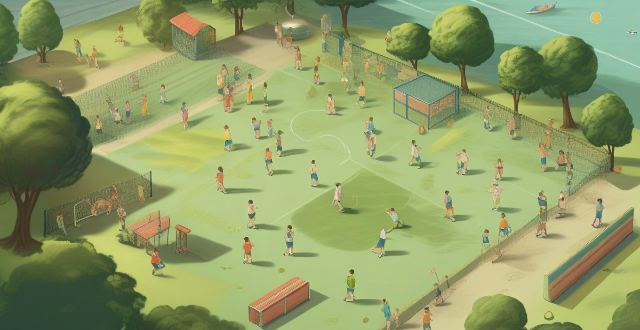
Can I get sports insurance for my child who plays school sports ?
Sports insurance can provide coverage for athletes participating in organized sports, including school sports. Consider factors like age limit, type of sports, level of competition, and coverage details when selecting a policy. Cost, duration, additional benefits, and the application process are also important considerations. While sports insurance offers peace of mind and financial protection, it can be expensive and may have limitations. Evaluate your child's needs and consult with an insurance professional to make an informed decision.

What are some common pitfalls to avoid when buying second-hand items ?
When buying second-hand items, it's important to inspect them thoroughly for any signs of damage or wear and tear. You should also verify the authenticity of luxury items and research their value to ensure you're getting a fair price. Be wary of scams and consider the return policy before making a purchase. By following these tips, you can avoid common pitfalls and find great deals on high-quality products.
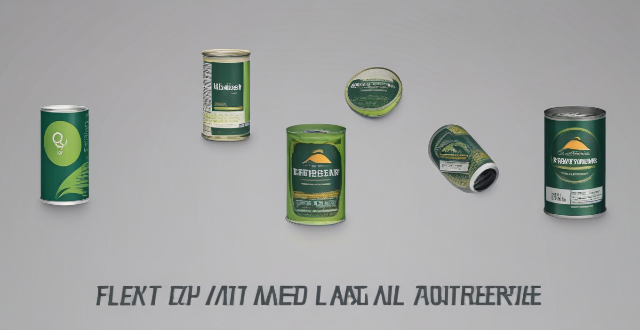
How can I save money while shopping for luxury items ?
Shopping for luxury items doesn't have to be expensive if you follow these tips. Set a budget, research prices, wait for sales, choose timeless designs, invest in quality, consider pre-owned items, negotiate prices, and avoid impulse buying to save money while enjoying the finer things in life.
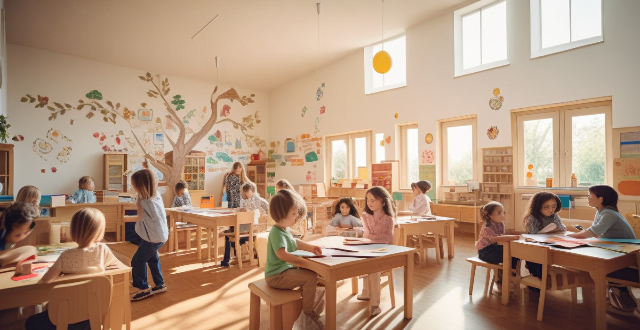
What measures should be taken to protect the rights of child laborers who work in industries affected by climate change ?
Protecting the rights of child laborers in industries affected by climate change requires a multifaceted approach that involves legislative actions, education and awareness, economic support, access to education, health and safety measures, and international cooperation. Ensuring that existing labor laws are enforced and amending legal frameworks to include specific provisions for protecting child laborers is crucial. Educating communities about the dangers of child labor and raising awareness among parents and communities about the importance of education can help reduce the reliance on child labor. Providing financial aid to families and creating alternative income sources can also reduce their dependence on child labor income. Improving access to education by building schools in rural areas and offering flexible schooling options can help accommodate children who need to work. Providing healthcare services and implementing safety measures in workplaces where child laborers are employed is essential. Collaborating with international organizations and sharing best practices can help address the issue of child labor globally. By implementing these measures, we can ensure that child laborers are protected and empowered to build a better future for themselves and their communities.

How do individual versus team sports differ in their impact on child development ?
Individual sports foster self-reliance and technical mastery, while team sports emphasize social skills and emotional intelligence. Both have unique benefits for child development, and the choice should consider the child's personality and desired skill development. A combination of both might provide the most well-rounded experience.

What are the essential items to include in a disaster preparedness kit ?
A disaster preparedness kit should include essential items such as water, non-perishable food, a first aid kit, warm clothing and bedding, light sources, communication devices, tools, cash, important documents, and personal items. It is crucial to regularly check and replace expired items to ensure the kit is ready for any emergency situation.
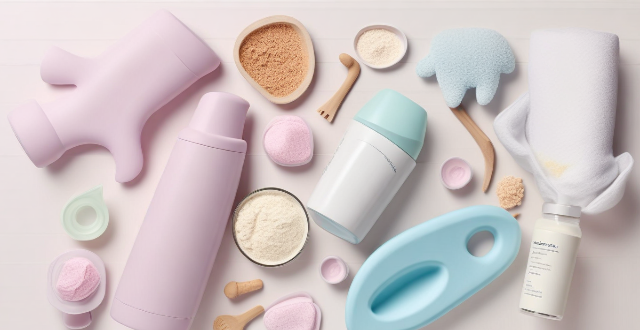
What should be included in a baby's first aid kit ?
The text provides a comprehensive list of items that should be included in a baby's first aid kit, organized into several categories: Basic Supplies (bandages, gauze pads, adhesive tape, antibiotic ointment, scissors, tweezers, disposable gloves, cotton swabs, thermometer); Pain Relief and Fever Reducers (Infant Tylenol or Motrin, teething tablets or gels); Digestive Issues (infant gas drops, oral rehydration solution); Skin Care (diaper rash cream, calamine lotion, hydrocortisone cream); Allergies and Cold Symptoms (saline nasal drops or spray, children's allergy medication, children's cough syrup); Miscellaneous Items (bulb syringe, instant cold pack, small flashlight with extra batteries, emergency contact information). The purpose of the text is to help parents be prepared for minor emergencies that may arise while caring for their baby by having these essential items readily available.

What are the best practices for recycling household items ?
Recycling household items is crucial for reducing waste and conserving resources. Best practices include knowing local guidelines, cleaning items, flattening cardboard, separating recyclables, using bins properly, donating usable items, composting organic waste, and buying products with recyclable packaging. By following these steps, individuals can contribute to a more sustainable future and reduce their environmental impact.

How do I know if the discounted items at Outlet Stores are of good quality ?
Outlet stores offer discounted items, but it's important to assess their quality before buying. Check for manufacturer defects, research brand reputation, compare prices with non-discounted items, and ask about return policies.
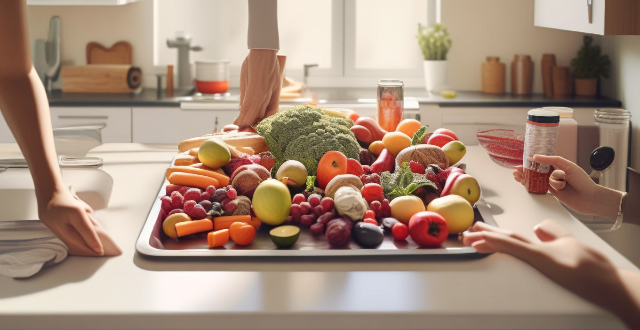
What are some creative ways to repurpose second-hand items ?
Repurposing second-hand items is a creative and sustainable practice that can save money and reduce waste. Here are some ideas for giving new life to pre-loved items: furniture makeover, clothing transformations, kitchenware reinvention, accessory revamps, artwork and décor, and kids' toys reimagined. By getting creative with second-hand items, we can contribute to promoting sustainability while saving money.

What are some tips for making science experiments at home for educational purposes ?
Science experiments are a great way to engage children in learning about the natural world around them. Here are some tips for conducting science experiments at home for educational purposes: ## 1\. Choose Age-Appropriate Experiments Select experiments that are suitable for your child's age and ability level. Younger children may enjoy simple experiments involving colors, shapes, and basic physical properties, while older children can tackle more complex concepts such as chemical reactions or electricity. ## 2\. Gather Materials in Advance Make sure you have all the necessary materials before starting the experiment. This will help avoid interruptions and frustration during the process. Create a list of required items and gather them ahead of time. ## 3\. Follow Safety Guidelines Safety should always be a top priority when conducting science experiments at home. Ensure that you and your child follow proper safety guidelines, such as wearing protective gear (e.g., goggles, gloves) and working in a well-ventilated area. ## 4\. Involve Your Child in the Process Encourage your child to participate in every step of the experiment, from planning to execution. This will not only make the experience more enjoyable but also help them develop critical thinking skills and problem-solving abilities. ## 5\. Observe and Record Results Observing and recording results is an essential part of any scientific experiment. Encourage your child to take notes throughout the process, documenting their observations and findings. This will help them understand the importance of data collection and analysis in science. ## 6\. Discuss Results and Implications After completing the experiment, discuss the results with your child. Ask questions about what they learned, how the experiment could be improved, and what implications their findings might have on real-world applications. This will help foster their curiosity and interest in science. ## 7\. Clean Up Properly Teach your child the importance of cleaning up after themselves by ensuring that all materials are properly disposed of and surfaces are wiped down. This will help maintain a safe and organized environment for future experiments.

How can I safely transport large or fragile second-hand items ?
The article provides a detailed guide on how to safely transport large or fragile second-hand items. It starts by listing the necessary packing materials and then moves on to assessing the item for pre-existing damage. The article emphasizes the importance of disassembling larger items, proper packing techniques for both fragile and large items, and loading the vehicle carefully. It also includes tips for safe driving during transit and careful unloading. The article concludes with a recommendation to consult professional movers when unsure about handling such items.

What are some fast techniques for sorting and storing items ?
Sorting and storing items can be a time-consuming task, but there are several fast techniques that can help you organize your belongings efficiently. Here are some tips to get started: 1. Declutter First: Remove unnecessary items from your space. Donate or sell items that are still in good condition. Dispose of items that are broken or unusable. 2. Categorize Your Items: Categorize your items into groups based on their purpose, frequency of use, or any other criteria that make sense for your situation. This will help you determine where each item should be stored. 3. Use Containers and Labels: Invest in containers of various sizes to store your sorted items. Clear containers are great because they allow you to see what's inside without opening them. Label each container with its category or contents to make it easy to find what you need quickly. 4. Utilize Vertical Space: Shelves, hanging organizers, and wall-mounted racks can help maximize your storage capacity and keep things off the floor. 5. Maintain Organization: After sorting and storing your items, it's crucial to maintain their organization regularly. Set aside time each week or month to go through your belongings and ensure everything is in its proper place.
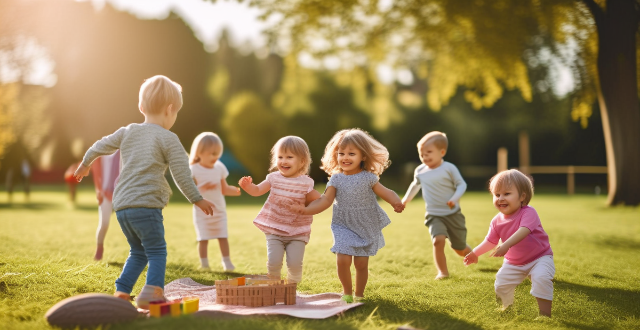
What are some fun and engaging parent-child activities ?
The text provides a list of fun and engaging parent-child activities that can strengthen the bond between parents and children while promoting creativity, physical fitness, teamwork, and learning. The activities are categorized into six main topics: arts and crafts, outdoor adventures, sports and games, cooking and baking, educational activities, and music and dance. Each topic is further divided into subtopics with specific activities that families can enjoy together. For example, under arts and crafts, families can set up an art station for painting and drawing or make paper crafts like origami figures. Under outdoor adventures, families can explore nature trails or plan camping trips. The text emphasizes the importance of finding activities that both parents and children enjoy and can participate in together.

What are the top websites for purchasing second-hand or refurbished items ?
Purchasing second-hand or refurbished items is a great way to save money while also being environmentally conscious. Here are some of the top websites for buying such items: 1. eBay is one of the largest online marketplaces where you can find both new and used items. It offers a wide range of products, including electronics, clothing, furniture, and more. 2. Craigslist is a classified advertisements website where people can post listings for various items, including second-hand goods. 3. Facebook Marketplace is a platform within Facebook where users can buy and sell items locally. 4. OfferUp is a mobile app that allows users to buy and sell items locally. 5. Swappa is an online marketplace specifically designed for buying and selling gently used technology like smartphones, laptops, and tablets. 6. Gazelle is a website that specializes in buying and selling refurbished electronics, including smartphones, tablets, and laptops.
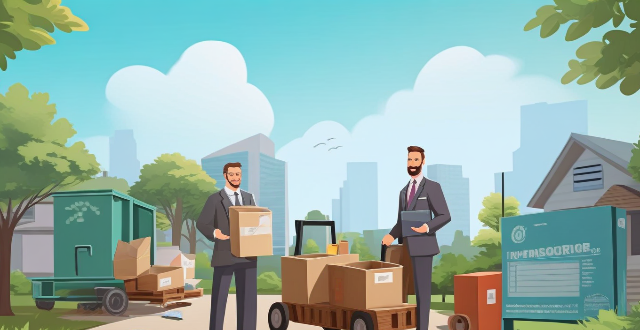
What are the benefits of recycling and reusing second-hand items ?
Recycling and reusing second-hand items offer significant benefits for the environment, economy, and society. By reducing landfill waste, conserving natural resources, and lowering emissions, these practices help to mitigate environmental challenges. Economically, they provide cost savings for individuals and create job opportunities. Socially, they promote sustainability and community engagement. Overall, recycling and reusing second-hand items are essential steps towards a more sustainable future.

What is the ideal way to pack fragile items for a journey ?
Packing fragile items for a journey can be a daunting task, but with the right approach, you can ensure that your precious belongings arrive at their destination safely. Here are some tips on how to pack fragile items ideally: 1. Use proper packing materials such as bubble wrap, packing paper, foam peanuts, and anti-static polyethylene bags. 2. Wrap each item individually to reduce the risk of damage during transit. 3. Use boxes of appropriate size to accommodate the item without too much extra space or pressure. 4. Label boxes appropriately with clear, legible writing to indicate that the box contains fragile items and which direction is up.

Can you suggest any essential items I should always pack for a vacation ?
When planning a vacation, it's important to pack the essential items that will ensure your comfort and safety throughout the trip. These include travel documents, clothing, toiletries, electronics and accessories, and miscellaneous items such as a travel pillow, reusable water bottle, snacks, reading material, cash and credit cards, and a travel journal. By packing these essentials in your carry-on luggage, you can ensure a comfortable and enjoyable vacation experience.

How can I effectively describe my second-hand items to attract buyers ?
When selling second-hand items, it's important to provide a clear and compelling description that captures potential buyers' attention. Here are some tips on how to effectively describe your items: 1. Keep the title short and sweet, using keywords related to the item and mentioning the brand and model if applicable. 2. Provide a brief overview of the item's condition and features, and mention any standout qualities or unique aspects. 3. Clearly state the condition of the item, using descriptive words like "like new," "gently used," or "well-loved." If there are any flaws or damages, mention them explicitly. 4. Highlight the main features and benefits of the item, using bullet points for easy reading and emphasizing any additional accessories or bonus items included. 5. Include multiple high-quality photos showing different angles and details, making sure they are well-lit and focused. Consider adding a photo of the item in use or with a size reference. 6. Set a fair price by researching similar items to determine a competitive price point, and consider offering a negotiation range or stating "firm" if you're not willing to budge. 7. Mention where you are located and whether local pickup is available, and if you offer shipping, specify the cost and estimated delivery time. 8. Provide a way for interested buyers to contact you, such as an email address or phone number, and consider adding a link to your profile or website for more information about other items you may have listed. By following these guidelines, you can create an effective description that will help attract potential buyers and increase your chances of successfully selling your second-hand items.